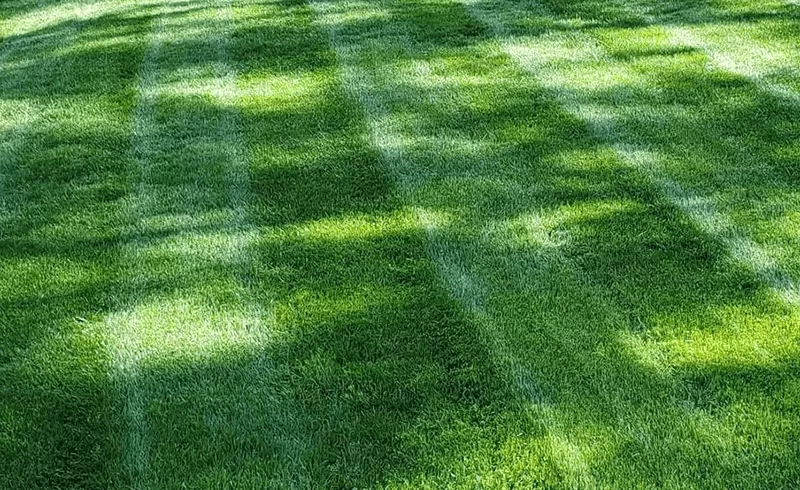
A common question is, “Is Kentucky Bluegrass a Fescue?” The simple answer is no. Although they are both cool-season grass types and share certain similarities, they are distinct species with unique characteristics.
Understanding Kentucky Bluegrass
Unique Characteristics and Benefits
Kentucky Bluegrass, scientifically known as Poa pratensis, is a perennial grass native to Europe, Asia, Algeria, and Morocco. It is popular for its rich, dark green color and dense, carpet-like growth. In addition to its aesthetic appeal, Kentucky Bluegrass exhibits a high tolerance for cold temperatures, making it an excellent choice for lawns in the Northern regions of the United States. It also boasts exceptional durability and recovery from wear and tear.
Components of Kentucky Bluegrass
Kentucky Bluegrass is characterized by its medium to fine texture, boat-shaped leaf tip, and extensive underground stem system, known as rhizomes. These rhizomes allow the grass to spread and recover quickly from damage. Additionally, Kentucky Bluegrass has a relatively shallow root system, which can make it less drought-tolerant than some other grass species.
Exploring Fescue Grass
Unique Characteristics and Benefits
Fescue grass, particularly Tall Fescue (Festuca arundinacea), is a popular choice for many homeowners due to its adaptability and resilience. It is known for its deep root system, which confers excellent drought tolerance, and its ability to thrive in various soil types. Unlike Kentucky Bluegrass, Tall Fescue does not spread via rhizomes but grows in clumps, resulting in a less dense, but highly durable lawn.
Components of Fescue Grass
The primary characteristics of Fescue grass include its deep root system, coarse to medium-textured leaves, and clump-like growth habit. These features contribute to the grass’s overall hardiness and ability to thrive in various conditions, including areas with heavy foot traffic.
Considerations for Specific Groups
For homeowners living in cooler climates, both Kentucky Bluegrass and Fescue can be viable options. However, Kentucky Bluegrass may require more maintenance, including regular watering and fertilization, to maintain its lush appearance. On the other hand, Fescue, with its greater drought resistance and adaptability, might be a more suitable option for those seeking a lower-maintenance lawn.
Practical Advice for Lawn Care
When choosing between Kentucky Bluegrass and Fescue, consider your local climate, soil type, and personal maintenance preferences. Regular watering, fertilization, and mowing are vital for both grass types, but the frequency and quantity may vary. For instance, Kentucky Bluegrass might require more frequent watering than Fescue due to its shallower root system.
Understanding the distinct characteristics of Kentucky Bluegrass and Fescue can help homeowners make informed decisions about lawn care. Despite their differences, both grass types offer unique benefits that, when managed correctly, can result in a lush and attractive lawn.

Bob Green, a passionate lawn care enthusiast with over two decades of landscaping experience, is this website’s proud owner. His vast knowledge of horticulture and dedication to helping homeowners maintain beautiful lawns are reflected in the valuable content he shares on his platform. John has always been interested in Agrostology.








